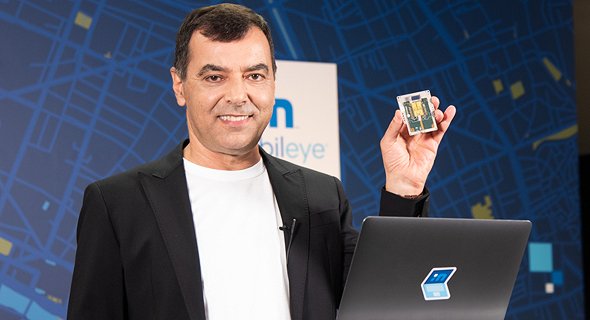Mobileye CEO Says Tesla’s Autopilot Development Will Hit ' A Glass Ceiling '

Mobileye is a company based in Israel that was acquired by Intel back in 2017 for $15-billion. It was and still is doing self-driving vehicle tech research and it is currently one of the industry's largest supplier of advanced driver assistance systems, whose customers include Hyundai, Kia, GM, Ford, BMW, Nissan, Audi, Volvo and Volkswagen.
It even supplied its EyeQ3 complete self-driving solution to Tesla, and this hardware was used in the Model S and Model X from 2009 until 2016. Now its EyeQ4 can be found powering the self-driving system in the NIO ES6 and ES8, Nissan's ProPilot 2.0, VW's Travel Assistant in the Passat and Golf, the Ford Mustang Mach-E, as well as the F-150 truck.
As this lengthy article on Ars Technica points out, there are many similarities between the self-driving tech development strategies at Mobileye and Tesla. For instance, both companies are on a quest to incrementally improve their driver-assistance systems to eventually evolve them into fully self-driving solutions.
However, during a recent presentation at CES 2021, the CEO of Mobileye, Amnon Shashua, said he considered Tesla's approach to gradually developing self driving tech wrong. He argued that a company can
deploy a crappy system, call it beta,
And then just try to
improve and improve and improve.
He went on to say that this
sounds reasonable, but actually it's a brute-force way of going about things.
And there is a risk that it could
get into a glass ceiling.
He then explained how he believes Mobileye's approach is better than Tesla's. For instance, Mobileye does rely on lidar sensors, whereas Tesla is actively striving to avoid using them. Another area which has seen investment and development from Mobileye are high-definition maps, another means to achieve self-driving, but one which Tesla's CEO, Elon Musk, considers a mere ' crutch,' and not really a viable solution.
Shashua went on to explain that in his view, the idea of recording footage while driving, storing that footage and then analyzing it (only when the car is near a WiFi hotspot) is not the right approach. He says what Tesla is doing with this program is essentially recording ' the wrong part ' of the self-driving process, especially since having a neural network learn to distinguish between objects, road markings, people and other vehicles is not really that hard a task nowadays.
He believes the main point of focus through recording all this footage and data is to comprehend the ' semantics of the road. ' By this he means the more subtle aspects of driving a car, such as the behavior of other cars and how they react in relation to the shape and geometry of the road. What Mobileye does is not collect the each and every piece of footage during a test run, but instead just a summary or a report which can be translated into a 3D map once it is uploaded into the company's servers.
Mobileye has been building detailed maps of many cities around the world, having racked up over 5 million miles-worth of data over the past five years. In the long term, the company's CEO believes this will give it an edge over competing systems (Tesla's included), since they won't have access to such a rich database.
It now wants to expand its testing to Paris, Tokyo, Shanghai and New York in 2021, after it did testing in Israel, Detroit and Germany in 2020. At the same time, it is worth noting that Mobileye seems willing to change its approach to developing autonomous driving tech, whereas Tesla's CEO is far more firmly rooted in his beliefs about what would work in this context and what wouldn't and, as more breakthroughs are made in coming years, this flexibility may grant it an edge over Tesla and others.
Related News
